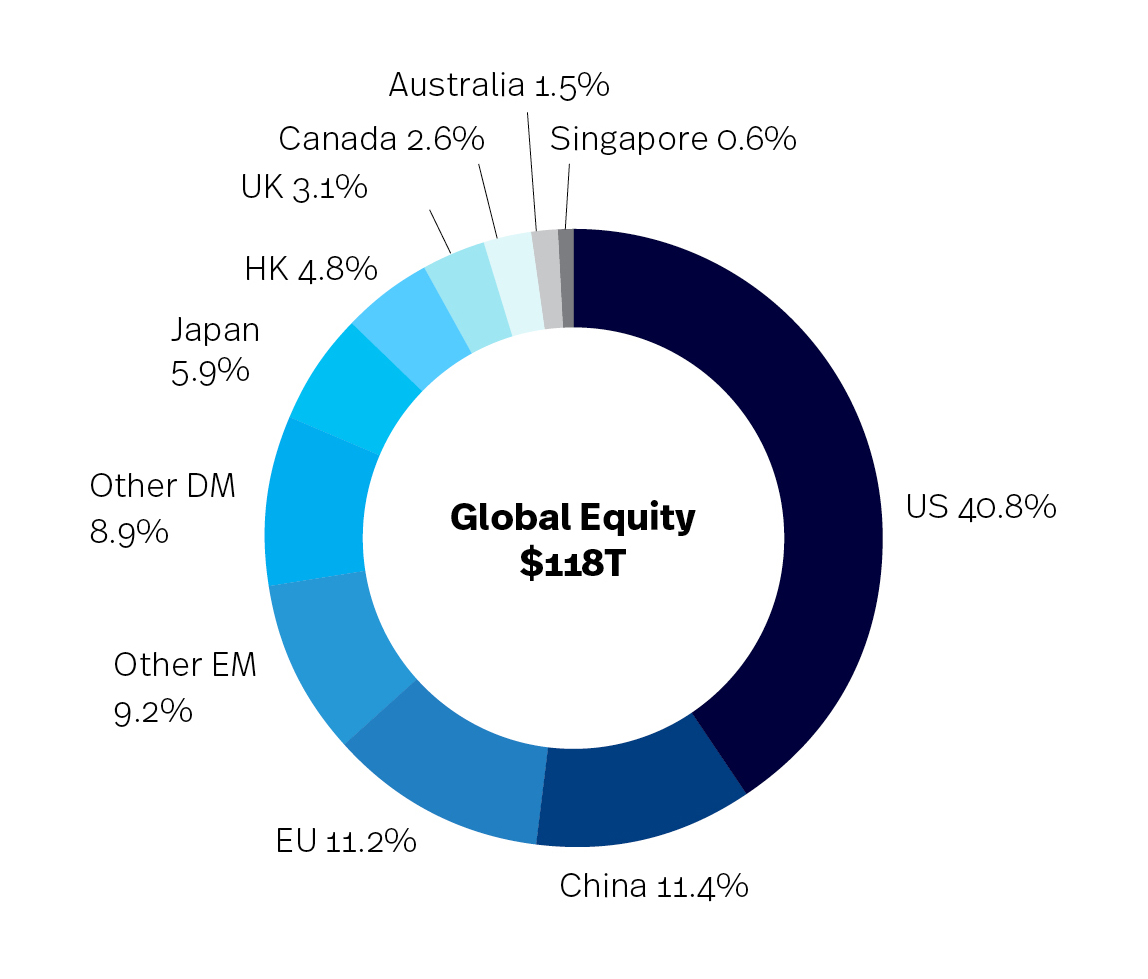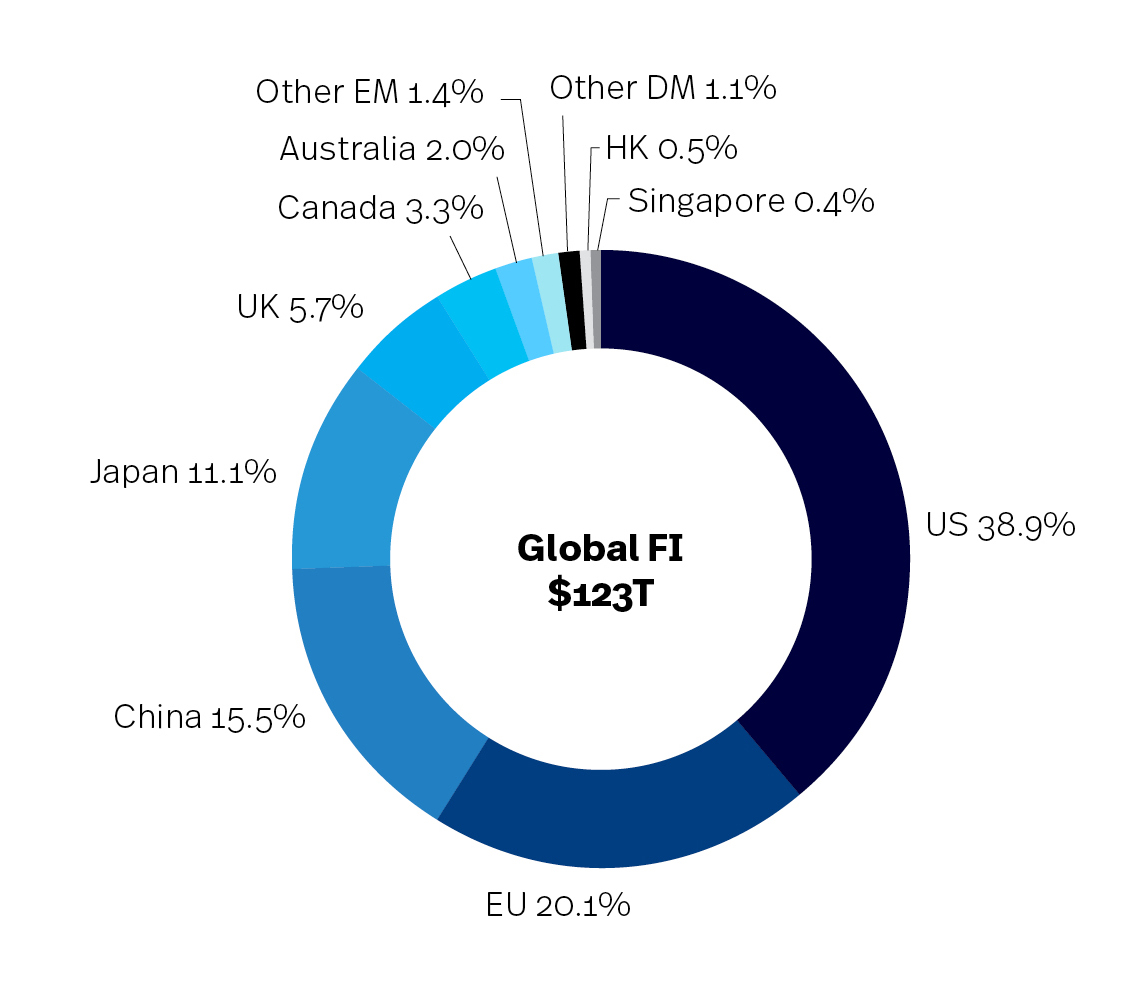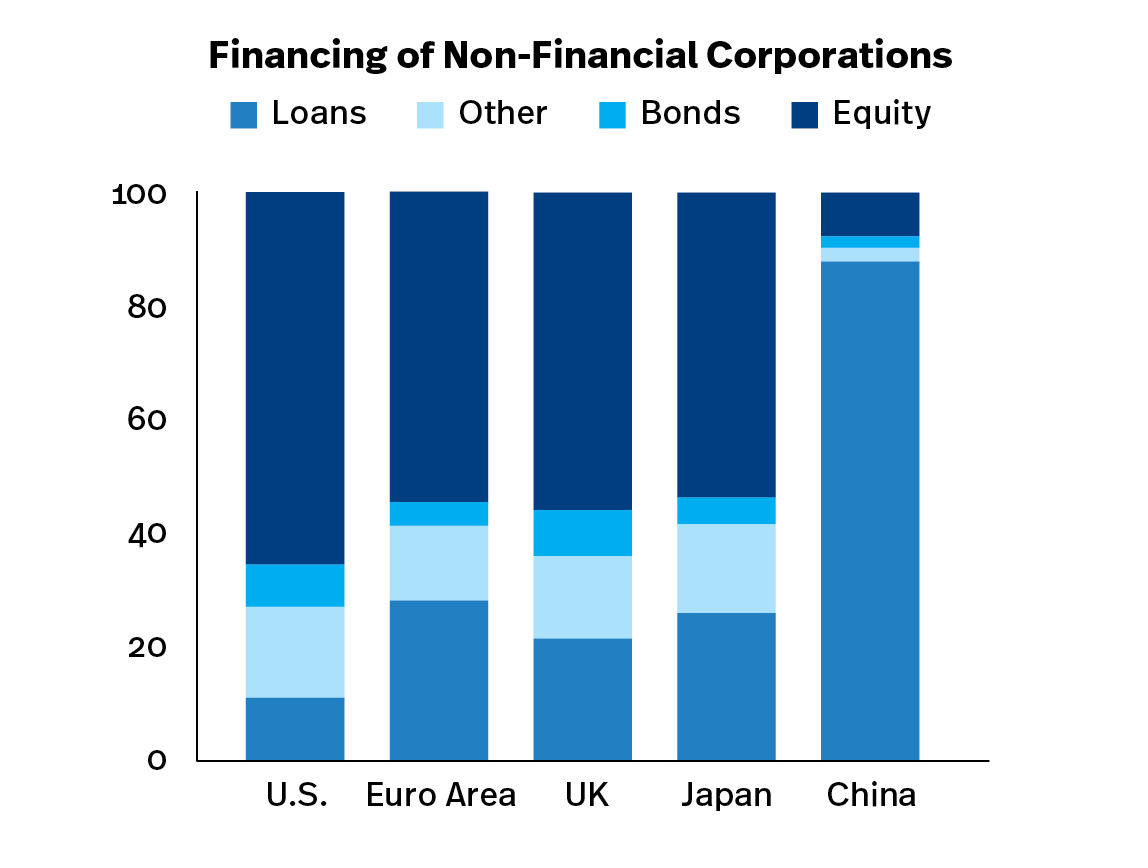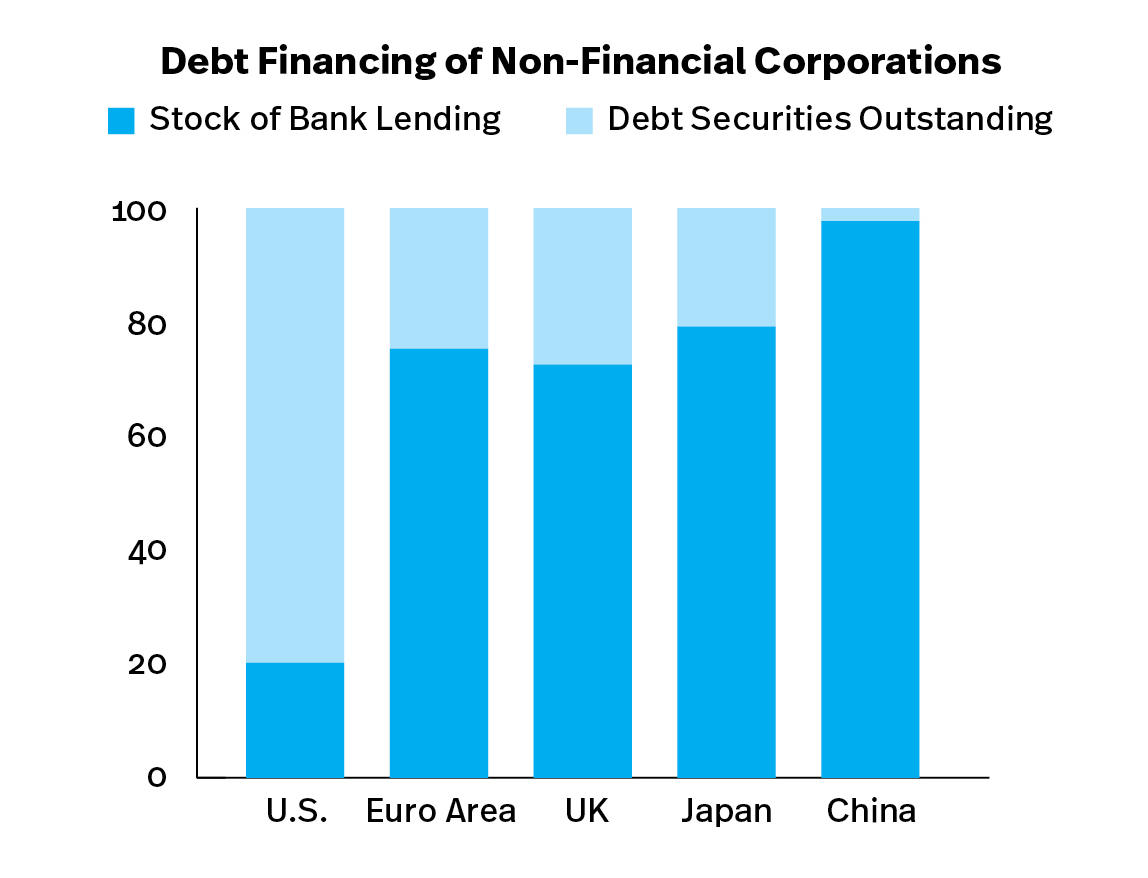The Basel “Endgame” package will significantly increase banks’ capital requirements over-and-above their already historically high levels in the past several years, resulting in significant additional funding costs for businesses, consumers, and investors, according to SIFMA.
Policymakers should be transparent about the costs and benefits of implementing the Basel Endgame package, taking into account the totality of prudential reforms introduced since the Great Financial Crisis (GFC), SIFMA said in the second of a series of blog posts on bank capital requirements and their impacts.
As of end 2022, the U.S. capital markets funded nearly three quarters of all U.S. economic activity. This is a major contrast to other regions in the world, where most debt provided to non-financial corporations comes from bank loans. Figure below shows that the U.S. capital markets are the largest in the world, accounting for 41% of the $118 trillion in global equity market capitalization, or $48 trillion, and 39% of the $123 trillion securities outstanding across the globe, or $48 trillion.
The U.S. capital markets continue to be among the deepest, most liquid and most efficient around the globe, SIFMA said.
The U.S. Capital Markets Highlights
 |  |
 |  |
Source: SIFMA 2022 Capital Markets Outlook
Even though they may not always be direct lenders, banks nonetheless play a critical role in facilitating capital formation and ensuring liquidity in the capital markets.
The Basel Endgame package, and the FRTB (Fundamental Review of the Trading Book) in particular, will however significantly increase the capital requirements for banks’ capital markets activities and thus limit their capacity to provide liquidity support to a range of key funding markets and perform important capital markets-related activities (such as market making) on behalf of their clients.
In September 2022, the Agencies confirmed that they intended to implement “enhanced regulatory capital requirements that align with the [Basel Endgame package] issued by the Basel Committee on Banking Supervision …”[11] While the Agencies are expected to implement the core elements of the Basel Endgame package, there is also an expectation, based on past experience, that they will impose super-equivalent requirements (often referred to as “gold-plating”), resulting in higher capital requirements than those contained in the Basel standards.
The expected material increase in capital requirements for U.S. banks’ capital market activities may arise from four potential sources – (1) the standalone impacts of the FRTB implementation; (2) the overlap between the FRTB and the Stress Capital Buffer (SCB) requirement; [12] (3) the interaction between the FRTB and the Collins Floor; and (4) additional constraints on the use of internal models.
Source: SIFMA




